It is estimated that around 80% of cities worldwide do not have affordable housing options for the majority of their population (1). The world needs to provide two billion homes over the next 75 years — meaning 96,000 new affordable homes need to be built every day (2).
The global housing crisis, interlinked with the dual crises of unprecedented climate change and biodiversity loss, is one of the greatest social challenges we are facing today. Housing infrastructure can continue to exacerbate problems or can be part of the solution. The global building and construction industry needs a monumental shift.
The ‘Sustainable and Affordable Housing’ report challenges the widespread perception that affordable and sustainable housing is not a mass market solution. Many of the solutions to the global housing crisis already exist. The case study content from five regions highlights cutting-edge built environment projects, making sustainable and affordable housing a reality for all — from 3D printed homes in Kenya, community engagement and collaborative financing models in Nepal, to disaster-resilience retrofits in the Philippines.
Through this publication, WorldGBC champions a unified vision for sustainable, affordable housing and spotlights best practice worldwide to demonstrate opportunities for success that could be scaled for greater impact. An analysis of case study data derives key calls to action for policy makers, the finance community, community approaches, and the design and construction industry.
References:
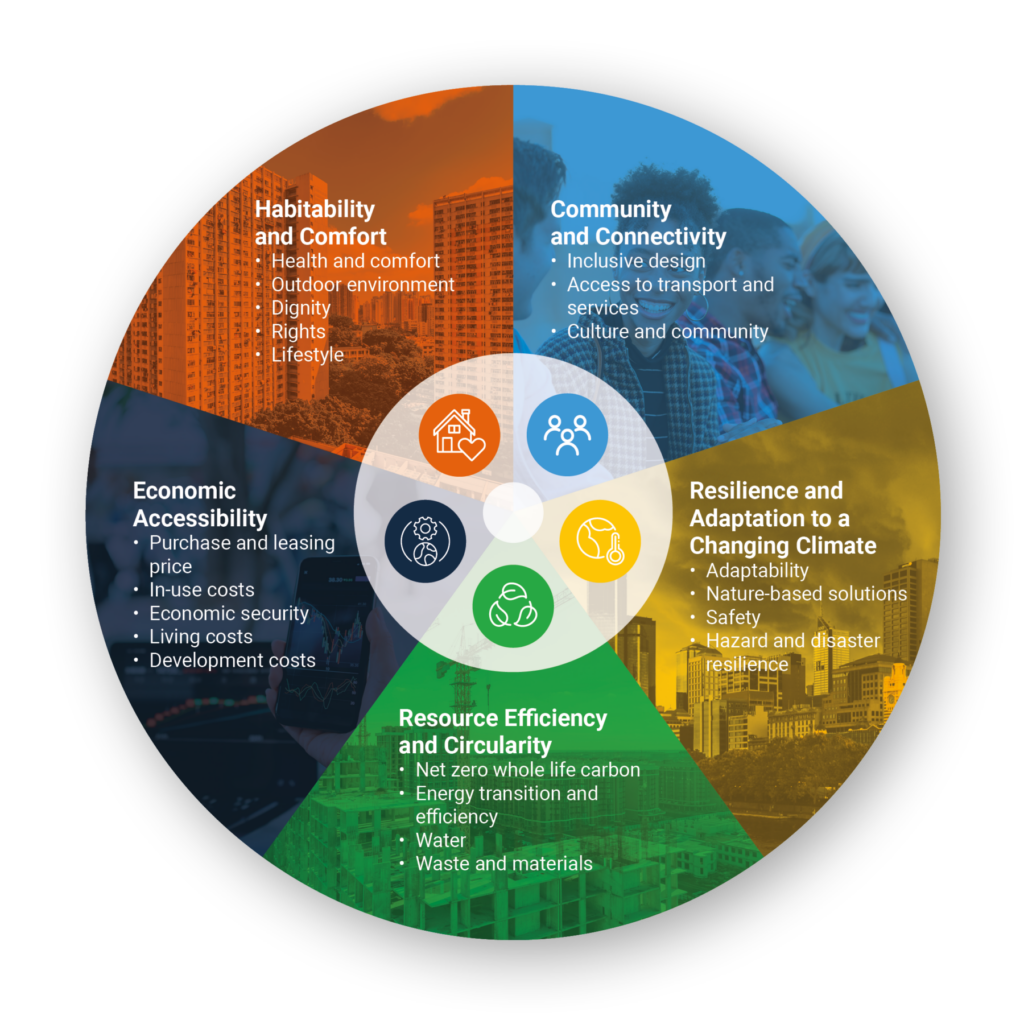
Five key principles, co-developed by an international Taskforce of Green Building Councils and affordable housing experts, guide the analysis of best practice solutions across the globe, these are:
Further Resources:
* Please see WorldGBC’s Health & Wellbeing Framework for more information on health, equity, and resilience strategies in the built environment
** Please see WorldGBC’s Resilience in the Built Environment Guide for more information about climate resilience and adaptation in the built environment
– IHRB’s Dignity by Design Framework for more information on each stage of the built environment lifecycle, aiming to minimise risks to people and maximise social outcomes.
– ICLEI’s Circular City Actions Framework for more information on a range of strategies and actions available to work towards circular development at the local level.
Further Resources:
* Please see WorldGBC’s Health & Wellbeing Framework for more information on health, equity, and resilience strategies in the built environment
** Please see WorldGBC’s Resilience in the Built Environment Guide for more information about climate resilience and adaptation in the built environment
– IHRB’s Dignity by Design Framework for more information on each stage of the built environment lifecycle, aiming to minimise risks to people and maximise social outcomes.
– ICLEI’s Circular City Actions Framework for more information on a range of strategies and actions available to work towards circular development at the local level.
Further Resources:
* Please see WorldGBC’s Health & Wellbeing Framework for more information on health, equity, and resilience strategies in the built environment
** Please see WorldGBC’s Resilience in the Built Environment Guide for more information about climate resilience and adaptation in the built environment
– IHRB’s Dignity by Design Framework for more information on each stage of the built environment lifecycle, aiming to minimise risks to people and maximise social outcomes.
– ICLEI’s Circular City Actions Framework for more information on a range of strategies and actions available to work towards circular development at the local level.
Further Resources:
* Please see WorldGBC’s Health & Wellbeing Framework for more information on health, equity, and resilience strategies in the built environment
** Please see WorldGBC’s Resilience in the Built Environment Guide for more information about climate resilience and adaptation in the built environment
– IHRB’s Dignity by Design Framework for more information on each stage of the built environment lifecycle, aiming to minimise risks to people and maximise social outcomes.
– ICLEI’s Circular City Actions Framework for more information on a range of strategies and actions available to work towards circular development at the local level.
Further Resources:
* Please see WorldGBC’s Health & Wellbeing Framework for more information on health, equity, and resilience strategies in the built environment
** Please see WorldGBC’s Resilience in the Built Environment Guide for more information about climate resilience and adaptation in the built environment
– IHRB’s Dignity by Design Framework for more information on each stage of the built environment lifecycle, aiming to minimise risks to people and maximise social outcomes.
– ICLEI’s Circular City Actions Framework for more information on a range of strategies and actions available to work towards circular development at the local level.
The ‘Sustainable and Affordable Housing’ report spotlights case studies from around the world which demonstrate innovative examples of sustainable and affordable housing. These case studies are showcased by region:
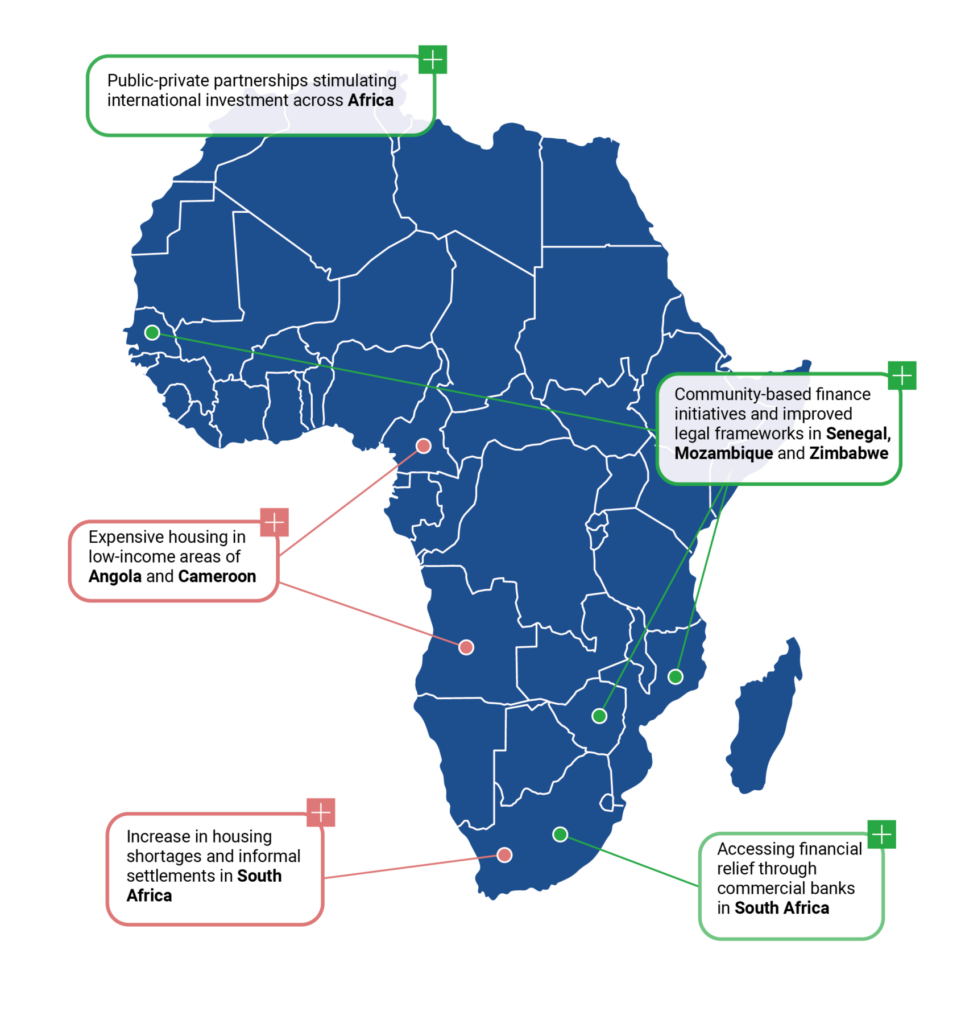
Challenges facing the housing sector
Africa is the most rural region in the world, yet has incredible diversity across the continent, with centres of wealth and urbanisation. The continent is also at the frontline of climate change impacts, such as droughts and expansion of desertification.
Driving the uptake of sustainable and affordable housing
In the last decade, there is a growing body of evidence of sustainable projects, policies and plans being implemented across the built environment in Africa.
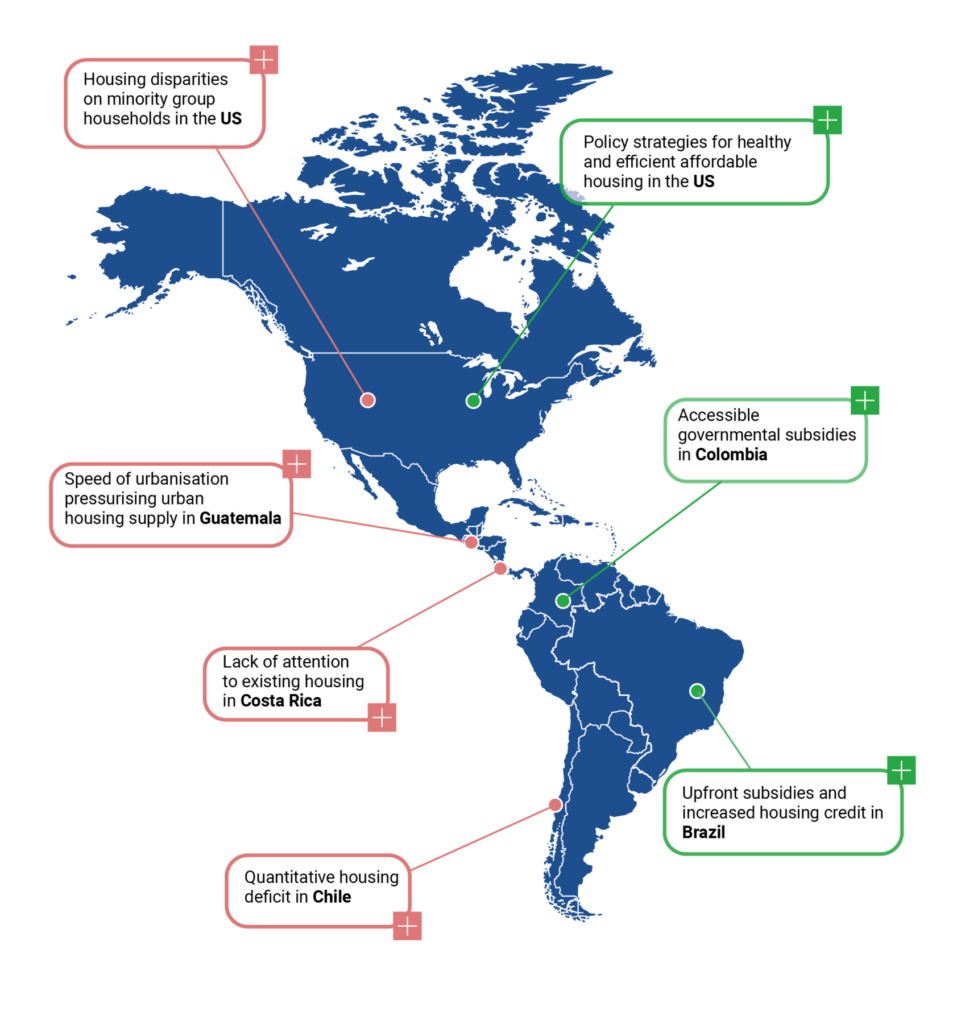
Challenges facing the housing sector
The Americas region is the second most disaster prone region in the world, with 152 million people affected by over 1,200 natural disasters from the years 2000-2019; including floods, storms, droughts, wildfire, and extreme temperatures (41).
Driving the uptake of sustainable and affordable housing
A range of innovation and traditional financing, policy and development models are being utilised across the continent to drive affordable, sustainable housing across the Americas.
References:
41. OCHA, ‘Natural Disasters in Latin America and the Caribbean, 2000-2019’ (2020)
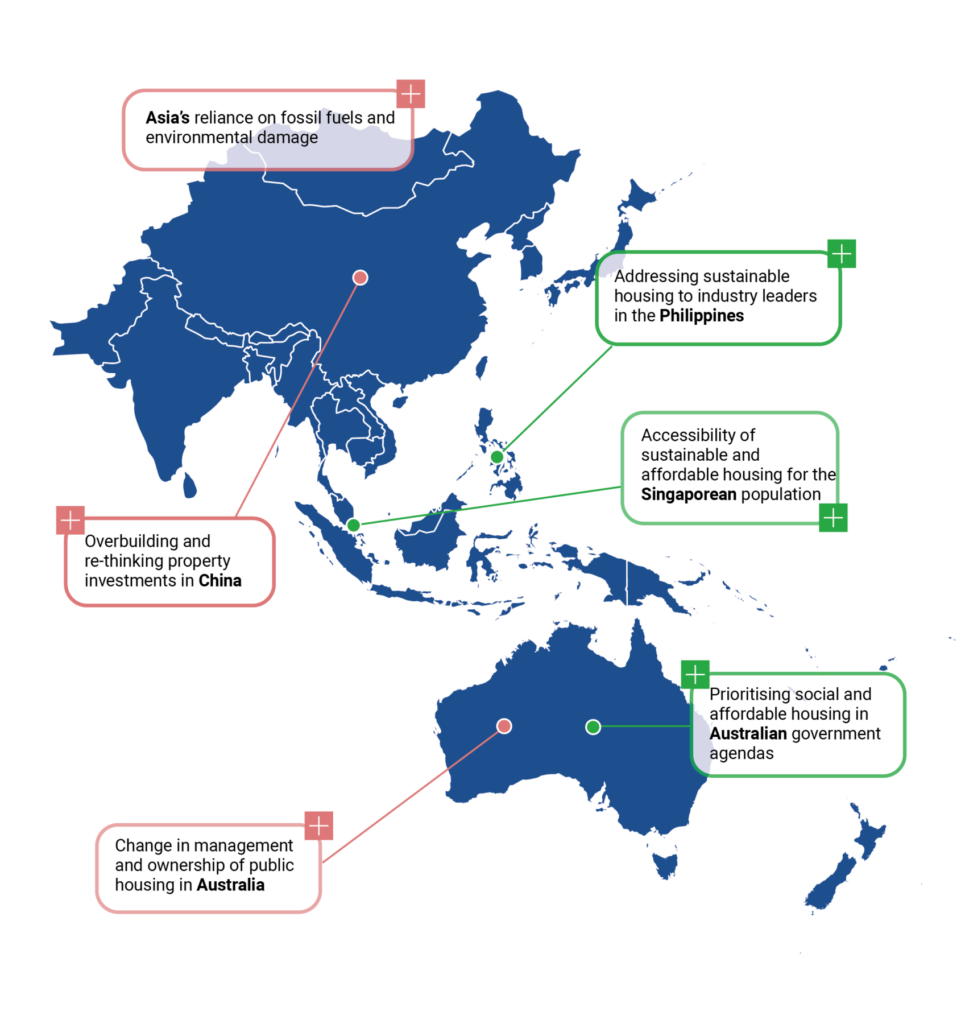
Challenges facing the housing sector
The continent of Asia is experiencing massive demographic changes, with the growing and urbanising populations of Asia’s developing nations presenting an urgent demand for sustainable and affordable housing. Across the entire continent, the physical impacts and risk of climate change have already been realised (62).
Driving the uptake of sustainable and affordable housing
Increasing the supply of sustainable and affordable housing has been a national priority for many governments in the Asia Pacific region, with a consistent message that countries need to build more, and an increase in private investors supporting local development.
References:
62. UN Habitat, ‘pro-poor urban climate resilience in Asia and the pacific’ (2014)
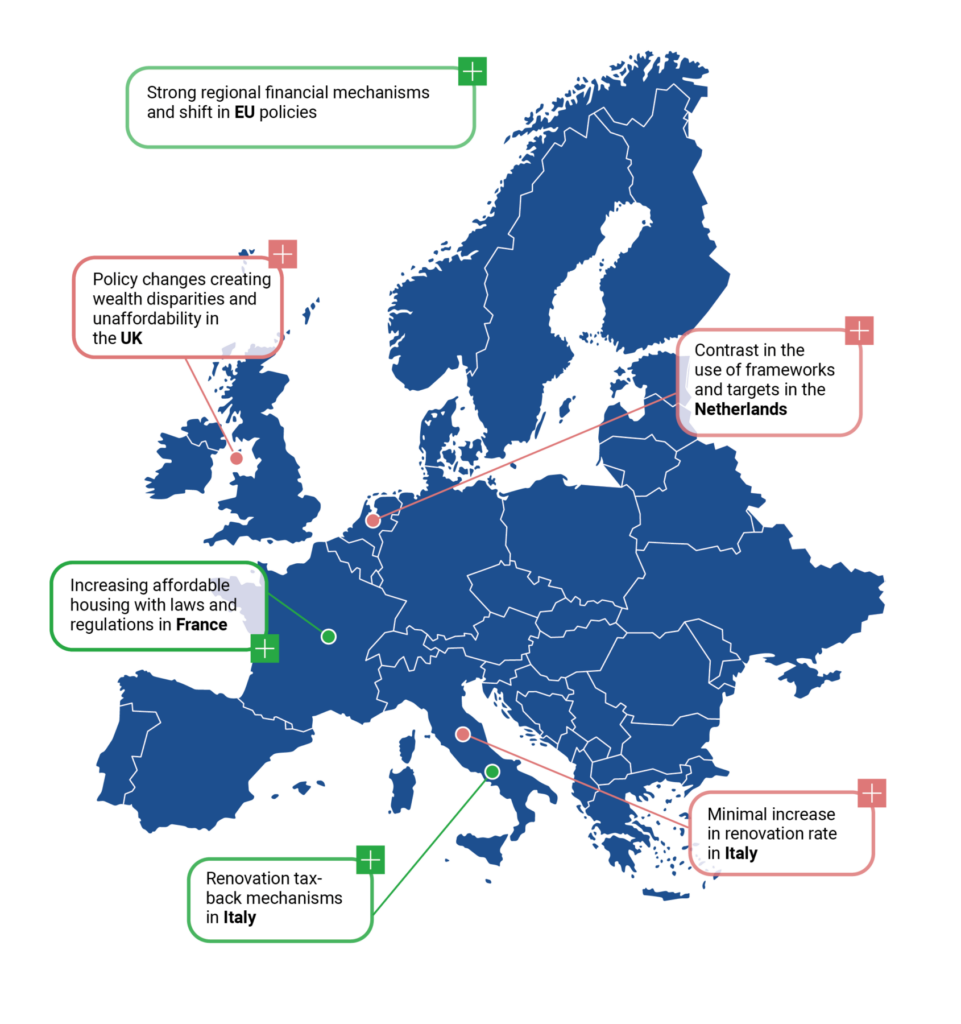
Challenges facing the housing sector
The European region has the highest GDP per capita of any continent80, and yet only represents less than 10% of the world’s total population. However, most European countries are projected to experience a 20% decline in population by 2050 (81).
Driving the uptake of sustainable and affordable housing
There are many sophisticated examples of affordable and sustainable housing in Europe being driven through a range of channels, from policy to private funding. Concern about physical climate risk is recognised as a key driver for greater investment in the residential sector, alongside EU level policy driving retrofits as part of the ‘Green Deal’; the regional action plan for moving to a clean, circular economy while restoring biodiversity, cutting pollution, and reaching climate neutrality by 2050 (91).
References:
81. Eurostat, ‘Population projected to decline in two-thirds of EU regions’ (2021)
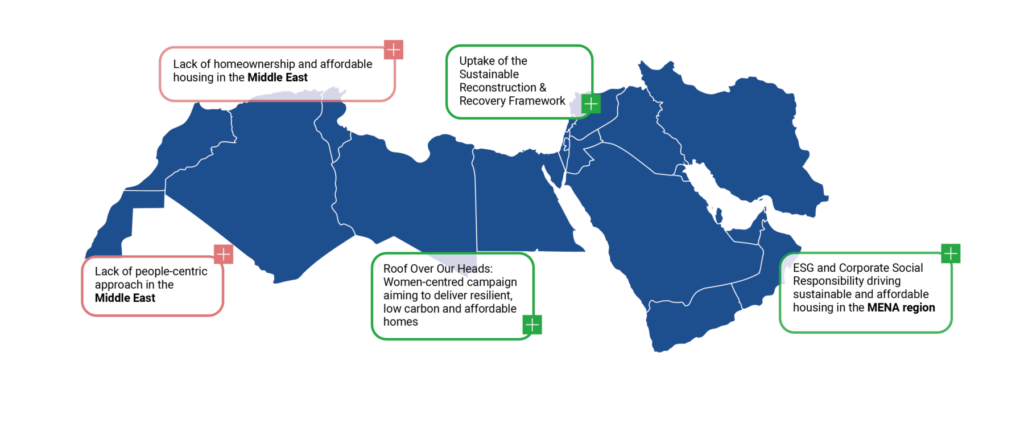
Challenges facing the housing sector
The Middle East is one of the most urbanised regions in the world, with over 56% of inhabitants living in cities. As average inhabitants grow younger and refugee populations increase, this is set to rise to 68% of total inhabitants, approximately 646 million people, living in cities by 2050. The housing demand will result in 70% of land use in most cities comprising housing (98).
Driving the uptake of sustainable and affordable housing
Varied approaches to sustainable, affordable housing can be observed, with greater or lesser degrees of government intervention in this area. The MENA region has strived to become more environmentally friendly, with record-breaking developments and a shift towards more sustainable practices in design and construction.
References: